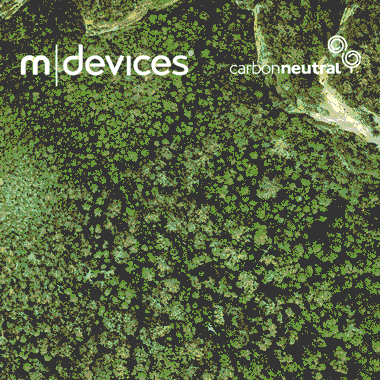Australian and New Zealand Continence Journal
Author Guidelines & Style Guide
AUTHOR INSTRUCTIONS
The Editors and the Editorial Board of the Australian and New Zealand Continence Journal have specified guidelines for prospective authors to follow when compiling an article to submit to the journal.
TERMS OF SUBMISSION
Each submission is evaluated on its timeliness, relevance, accuracy, clarity and applicability to the journal. Submissions will be accepted from any country but must be written in English. Submissions to the journal must be original and unpublished work. Submissions must not be under consideration elsewhere. The ANZCJ Editorial Office will check each submission using plagiarism detection software to verify content is original and not previously published. As part of the submission process an author for correspondence must be nominated. This is usually the author who completes the submission on the manuscript system. A competing interest statement must be submitted using the form provided on the ANZCJ Scholar One manuscript submission site. As part of the submission process all authors must sign the author statement and copyright assignment form available on the ANZCJ Scholar One submission site. Once it is published, the article and its illustrations become the property of the journal, unless rights are reserved before publication.
All work is sub-edited to journal style. The editors reserve the right to modify the style and length of any article submitted, so that it conforms to journal format. Major changes to an article will be referred to the author for approval prior to publication.
The Australian and New Zealand Continence Journal provides assistance to first time authors. Authors are invited to contact the ANZCJ Editorial Office to discuss potential manuscripts. Publication of all articles is free of charge.
AUTHORSHIP
All listed authors should have made a substantial contribution to the manuscript and may be required to indicate their contribution.
Authorship is defined as per ICMJE guidance following 4 criteria:
- Substantial contributions to the conception or design of the work; or the acquisition, analysis, or interpretation of data for the work; AND
- Drafting the work or revising it critically for important intellectual content; AND
- Final approval of the version to be published; AND
- Agreement to be accountable for all aspects of the work in ensuring that questions related to the accuracy or integrity of any part of the work are appropriately investigated and resolved.
Participation solely in the acquisition of funding, the collection of data or supervision of such does not justify authorship and such contributions should be listed in acknowledgements which will be printed under the author details. All participating authors must be acknowledged as such; proof of authorship may be requested.
The author for correspondence is responsible for ensuring that all co-authors have seen and approved the manuscript and are fully conversant with its contents.
Permissions: It is the responsibility of the author to obtain written permission from a copyright holder to reproduce copyrighted work; a copy of that permission must be provided to the journal prior to publication and a full citation of the source must be provided.
Conflict of interest: It is the responsibility of all listed authors to disclose to the Editor any interests they may have pertaining to their manuscript. Conflicts of interest should be disclosed using the competing interests form provided on the Scholar One platform as part of the submission. If an interest exists, publication of that interest is at the Editor’s discretion.
AI-GENERATED CONENT
You must disclose that you have used content in your submission which was written or assisted by AI (artificial intelligence). This can include text, images, figures, etc. You must acknowledge what the AI was used for, which AI system you used, and which sections of your work it was used for. You must include a brief explanation of what you asked the AI to do and what you did with the resulting content to produce your submission.
This does not refer to using an AI tool to check your spelling and grammar. Spelling and grammar checks prior to submission are recommended to avoid common typos and do not have to be disclosed.
ETHICS
Investigations in human and animal subjects must conform to accepted ethical standards. Authors must provide a statement within the text that the research protocol was approved by a suitably constituted Human Research Ethics Committee (HREC) of the institution within which the work was carried out and that it conforms to the Statement on Human Experimentation or the Statement on Animal Experimentation by the NHMRC. The HREC number must be included in the text. Clinical trials must be registered, details including trial registration number provided, along with a statement that participants gave consent before taking part.
MANUSCRIPT TYPE
The Australian and New Zealand Continence Journal welcomes original research articles for peer review and general articles regarding the achievements of people working in the disciplines pertaining to the management of incontinence, clinical issue updates, book reviews and general project information. Types of manuscripts accepted include but are not limited to the following:
DISCUSSION: Presentation of information from more than one viewpoint (for example, for and against) and usually ending with a recommendation or opinion based on the evidence presented.
LITERATURE REVIEW:
Narrative Review: describes and evaluates the current knowledge of a subject, identifies gaps or inconsistencies and includes critical evaluation with recommendations for future research.
Systematic Review: describes planned analysis and evaluation of all available research studies on a particular clinical issue, conducted in accordance with scientific principles and may include recommendations for future research.
QUALITATIVE AND QUANTITATIVE RESEARCH REPORT: Presentation of study results in an ordered fashion, based on common practice. Research reports are expected to follow the Uniform requirements for manuscripts submitted to biomedical journals, as published by the International Council of Science Journal Editors www.icmje.org.
CASE STUDY: Combination of recount (retelling of events as they occurred) and information report (classification and description of something). Can be presented in different ways to give a cohesive account. To publish a case study containing any personal information about a patient you must provide a statement where the patient has given consent for the information to be used (understandably with case studies it is not possible to get consent from the patient beforehand – as you would with a clinical trial).
EXPOSITION (INCLUDING LETTER TO THE EDITOR): Putting forward of a particular viewpoint, justification of a particular argument.
NARRATIVE: An informative account of a meeting or conference, or a review of a book, journal article or relevant website.
SEGMENTS
We have launched three regular segments to encourage people who do not have the resources or time to publish a full paper to let the community know what they have been up to. The three segments will be double-blind peer reviewed, 800-1200 words long (not including references) and have 6-12 references.
Did you know… This segment covers interesting things related to continence that our readership of nurses, doctors, physios, OTs and other health professionals might not know. It could be something you have just discovered, or something you have known about for a long time that you are always surprised people don’t know about.
What I learned about… This segment can cover anything you have recently discovered, it could be from a book, a conference, a training course, or even a discussion you have had.
Have you heard… This segment is any news related to continence, including upcoming events, new research released, new services available, new products related to continence.
PREPARATION OF MANUSCRIPTS
Manuscripts word length is dependent on the type of paper submitted. Research papers should be no more than 4000 words. Manuscripts should be created in a Word document using minimal formatting and typed double spaced in 12-point Times New Roman font. Define abbreviations and acronyms on first mention in the text.
ABSTRACTS: All papers (apart from segments) should include an abstract of no more than 250 words. No references in the abstract. No abbreviations unless it saves more than ten words.
TITLE PAGE: Include title of the work, total word count, and up to five keywords. Title page should not include any information that identifies the authors or their respective institutions as all submissions are double-blind-peer-reviewed.
TABLES: To be presented on separate pages, one per page. Tables should be clearly typed, showing columns and lines. Number tables consecutively using Arabic numerals in the order of their first citation in the text and supply a brief title for each. Place explanatory matter in a legend under the table, not in the heading. Explain in the legend all non-standard abbreviations used in each table. Please provide an editable version of the table (eg PowerPoint, Word Doc or Excel rather than a PDF).
PHOTOGRAPHS AND FIGURES: Should be supplied in a graphic format such as jpeg at a resolution of 300 dpi. Illustrations and figures must be supplied in a format that can be edited (eg PowerPoint, Word Doc, Illustrator file rather than a PDF). The title and legend for figures should be on a separate page after the references. Each figure must include its place, its number and the orientation of figure. Patients or other individual subjects should not be identifiable from photos unless they have given written consent for their identity to be disclosed; this must be supplied.
REFERENCING GUIDELINES
The referencing format is based on the Vancouver style, the main feature of which is the use of numbers at the point of reference so as not to interfere with the flow of words. Each number corresponds to a single reference provided in the reference list at the end and, once assigned a number, a reference retains that number throughout the text, even if cited more than once. If more than one work is quoted in a reference, each work must be assigned a number. At any point in the text, the reference may be one1 or several2-4 numbers. If discussing a paper with more than three authors, you can describe them as Smith et al. 1 in the text. Following are some examples of references from different sources:
JOURNAL: A complete journal reference includes: name(s) of author(s), title of article, abbreviated journal name, year of publication, volume and edition number and inclusive page numbers.
1. Hyer W, Fell JM. Screening for familial adenomatous polyposis. Arch Dis Child 2001;8:377–381.
BOOK: A complete reference to a book includes name(s) of author(s) or editor(s), book title, edition number, name of publisher, place of publication, year of publication, specific page numbers and internet reference if applicable.
2. Blaxter PS, Farnsworth TP. Social health and class inequalities. In: Carter C, Peel JR, editors. Equalities and inequalities in health. 2nd ed. London: Academic Press; 1976. p. 165–78.
WEBSITES AND ELECTRONIC REFERENCES: Example below.
3. Australian Institute of Health and Welfare. Chronic diseases and associated risk factors [Internet]. Canberra: Australian Institute of Health and Welfare; 2004 [updated 2005 June 23, cited 2009 Feb 12]. Available from: http://www.aihw.gov.au/cdarf/ index.cfm.
It is the author’s responsibility to ensure that all references are correct. Please double check all citations with an electronic database to ensure accuracy in the reference list. Manuscripts submitted with multiple errors will be returned for correction before being accepted for peer review.
SUBMISSION OF MANUSCRIPTS
The Australian and New Zealand Continence Journal, in conjunction with Cambridge Media, now uses the world’s leading manuscript management system – ScholarOne. Submission of manuscripts for peer review will only be accepted via this online program. Reports and news can still be submitted to the Managing Editor by email (journal@continence.org.au).
All tables, figures and photographs, as well as the main document and title page, are to be uploaded separately. Please ensure image files are uploaded as jpegs and are a MINIMUM of 500kb and no larger than 2mb in size. The manuscript may be accompanied by a Word document with tables, figures and photographs embedded so as to show the preferred positions of these. This separate file can be uploaded at step 4 as a cover letter.
To submit manuscripts, go to http://mc04.manuscriptcentral.com/anzcj. To create an account when using the system for the first time, click ‘Create Account’ in the top right-hand side of the screen. Please enter as much information as possible when creating an account.
Once in the system, the steps to submit an article are:
Step 1: Manuscript type, title and abstract.
Step 2: Keywords: at least two are required, up to five allowed.
Step 3: Add co-author and edit your details (if necessary).
Step 4: Manuscript information and questions on funding, ethics, conflict of interest and copyright.
Step 5: Upload files.
Step 6: Review and submit.
The ANZCJ ScholarOne website has comprehensive guidelines and online tutorials to assist in using the system. Click on the orange ‘Get Help Now’ in the top right-hand corner. A PDF of the Author Quick Start Guide can be downloaded after choosing ‘Author’ as your role.
PEER-REVIEW PROCESS
All manuscripts are initially reviewed by the Editorial committee and those deemed unsuitable (insufficient originality, serious scientific or methodological flaws, or a message that is too specialised or of limited interest to the journal readership) are returned to the author(s), usually within two weeks. If the manuscript does not conform to the submission guidelines, the author will be asked to amend it prior to peer review.
All manuscripts are reviewed by content and writing peers, and those with expertise in statistics, for relevance, construction, flow, style and grammar. This process may take six weeks. Reviewers spend considerable time in reviewing the manuscripts and providing constructive feedback to authors in order to strengthen papers. The length of time of the publication process may vary and depends on the quality of the work submitted. Several revisions may be required to bring the manuscript to a standard acceptable for publication.
The Editorial team undertake the final review and may have different questions for the author/s to consider.
Proofs of articles about to be published will be sent in PDF format to the corresponding author for review. The final decision about publication is made by the Editor-In-Chief.
STYLE GUIDE
GENERAL FORMATTING POINTS
- Single spaces only; no double spaces even after full stops.
- Use hyphens - between number ranges and en dashes as punctuation –.
- No spaces before and after mathematical signs ie 23x34=67 or >10km.
- No spaces between numbers and their measurements ie 23km, 4cm, 5mg.
- Bullet points should be used in lists rather than 1. or 1) or a) unless it is a direct quote.
- Use of single and double quotes as follows:
- A proper quote – two quotes; “I shall not be swayed”, said the minister.
- For emphasis or referral – one quote; The word ‘property’ can mean.
- Quotes of 45 words or more will be indented from the margin and neither single nor double quotes used.
TEXT STYLE
- Use capitals for proper nouns only – the president, President Obama. The committee, the Executive Committee; note also Subcommittee is one word – state and territory have lower case letters. Generic job titles are lower case: nurse practitioner, director of nursing.
- Names of books, journals, films, television shows in lower case and in italics, without quotes. Eg He wrote the paper Women and their role in a legal society.
- Abbreviations in brackets directly after first reference to it spelled out in full, no quote marks. From then on, refer to abbreviation only, never full name. Eg The Wildlife Conservation Act (WCA), not (‘WCA’) / It is said that the WCA is...
- Use figures rather than words to describe units of time, space, distance, etc: 12 months, 27 metres.
- Spell out all numbers to ten, apart from in a number range. Eg 3-7 people.
- Format dates as 12 August 2024.
- Eg and ie (not e.g. and i.e.).
- Use the Oxford Comma.
PREFERRED SPELLING
- Use Australian (British) spellings – ‘is’ rather than ‘iz’, ie specialise not specialize, analyse not analyze, etc.
- Programme (program refers only to a computer program).
HYPHENATION
- Prefixes (anti- post- semi- co- multi-) usually take hyphen unless it is the accepted style not to (cooperation, prearrange, reallocate, antisocial).
- Short adverbial phrases and those with numbers take hyphens – up-to-date, 70-match career, 21-year-old.
No hyphens
o Healthcare [rather than health-care or health care]
o Quality of life
o Postoperative / preoperative / perioperative
o Wellbeing
o Decision making
o Daytime / night time
o Gastrointestinal
o Timeframe
o Multidiscipline / multicentre / multipurpose
Hyphens
o Long-term / short-term
o Pre-admission and most cases of pre- except preoperative
o Follow-up [noun] but follow up [verb]
o Methicillin-resistant / vancomycin-resistant
o End-stage [liver disease]
o -based [evidence-based]
o -related [disease-related]
o -associated / -aquired [hospital-associated]
o Off-label drug use
Please contact us with any questions regarding the author guidelines journal@continence.org.au




